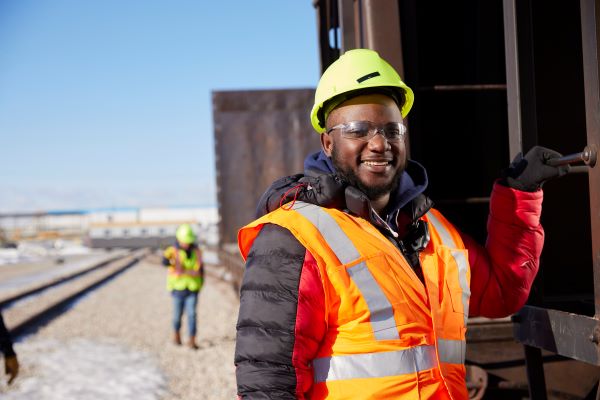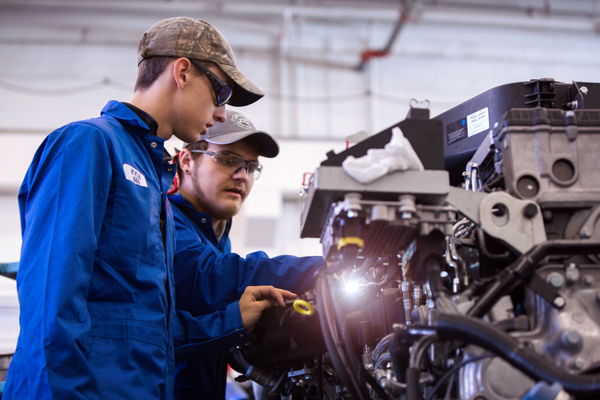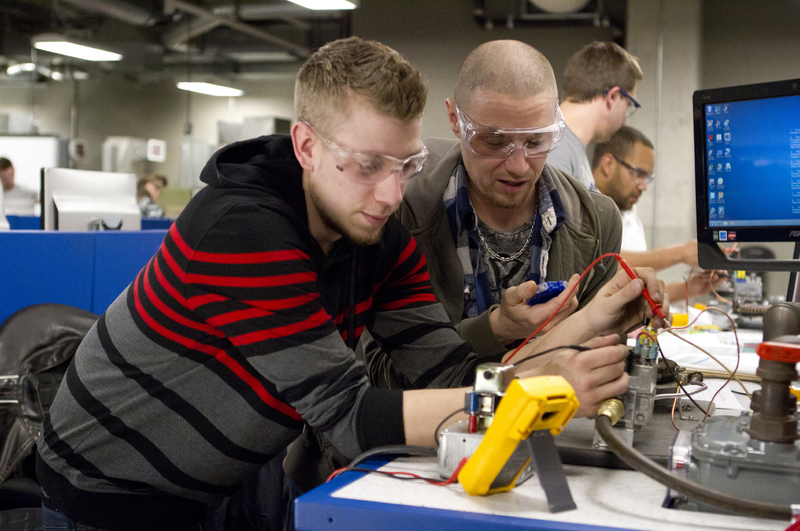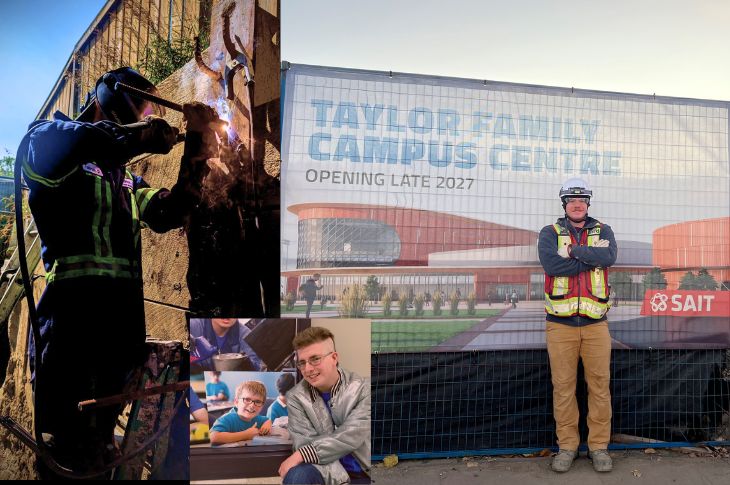
School of Transportation

The drive to educate started with the School of Transportation.
Let us help you steer your passion into a career.
A part of SAIT since opening its doors in 1916, our school has prepared students for dynamic aviation, rail and automotive careers for more than 100 years, continually evolving our programs to meet the needs of today’s employers.
We work closely with industry partners to ensure you are career-ready when moving from the classroom to the workplace. Whether your goal is to fix aircrafts, cars and trucks, pilot drones, or marshal and switch trains, we have the cutting-edge education you need to succeed.
When you walk into the Clayton Carroll Centre, you know you're in an automotive building. And that comes with a sense of belonging shared by the students and the staff, and I think it's allowed us to also connect better with industry.
George Rhodes
Associate Dean, Apprenticeships and Skilled Trades
average starting salary of our graduates
graduate employment rate
Why SAIT?
You’ll learn in an environment that mimics the workplace.
SAIT is home to state-of-the-art learning spaces — including the Art Smith Aero Centre, Centre for Rail Training and Technology, Clayton Carroll Automotive Centre and Point Trotter Campus. These facilities are set up the same way offices, shops, warehouses, and work bays are in industry.
Our instructors are experts, equipped with years of experience working in the fields they teach in and keep a close connection with industry to ensure their skills stay up to date.
Our programs
Join the ever-evolving transportation industry and steer your passion for trains, planes and automobiles into a rewarding career.
Choose from our wide range of diploma, certificate and apprenticeship options to get started.
Aviation programsLooking for advising?
Our advising team is available from 8 am to 4:30 pm Monday through Friday.
If you'd like to speak to an advisor about a program you're interested in or currently taking, book an appointment with us!
Book an appointmentUpcoming events and information sessions
Our industry partners
Calgary Motor Dealers Association
Our partnership was established in 1985 when SAIT began to participate in the Calgary Motor Dealers Association's (CMDA) Annual International Car and Truck Show.
CMDA continues to be an important supporter of our diploma programs as well as the apprentices in the auto body, automotive, heavy equipment and parts programs, through scholarship funds.
Ford Canada
Ford Canada selected SAIT as the Alberta-only approved Ford Automotive Student Service Educational Training (ASSET) training centre.
Ford has donated $750,000 for ongoing support for the program.
General Motors
Our partnership began in 1984 when SAIT provided an instructor to GM to deliver courses on specialized electronics in Southern Alberta and British Columbia. Shortly thereafter, SAIT became one of two Canadian colleges to provide auto body training to GM personnel across the country.
In 1995, SAIT began delivering apprenticeship training to GM's Automotive Service Education Program (ASEP). GM has provided vehicles, equipment, tools and curriculum to support this program.
Melroe Bobcat
In 1996, SAIT started providing training to Bobcat equipment technicians in Western Canada and the Northwest Territories.
Bobcat trains SAIT's trainers and provides equipment and tools to support the partnership. SAIT benefits from having instructors updated in the latest technology and students benefit from having access to the latest equipment.
Recreational Vehicle Dealers Association
The Recreational Vehicle Dealers Association (RVDA) provides strong industry support through donations, scholarships, and programs directly supporting our Recreation Vehicle Service Technician apprentices.
Railway Association of Canada
The Railway Association of Canada (RAC) represents some 60-member freight, tourist, commuter, and intercity Canadian railways, playing a significant role in promoting the safety, viability, and growth of the railway industry within Canada.
Canadian National
Canadian National's (CN) goal is to be the best transportation company in North America. Employees working in rail yards, offices and intermodal terminals bring essential skills and play an important role in keeping our operations running smoothly.
Canadian Pacific Railway
Those at Canadian Pacific Railway (CP) are railroaders who value hard work, accountability and doing what we say we'll do. Why? Because they want to see their customers' businesses grow. This 130-year-old Canadian company is known for building businesses and building a nation.
Transportation #HereAtSAIT
The latest news from our students, alumni, staff, industry partners and more.

Legacy of learning: A donor’s commitment to apprenticeship training
When Motive Action Training Foundation (MAT) closed its doors in 2021, co-founder Karl Herzog and the Foundation’s volunteer board members were determined to find a way to continue MAT’s legacy of helping people take their first steps into a career in the trades.

Peek inside Santa's workshop #HereAtSAIT
With skills and expertise in trade, tech, hospitality, health and business, we have the ticket #HereatSAIT to ensure holiday cheer for Santa and his team of hard-working elves.

Kickstart a career in the trades while in high school
How a grad and two apprentices discovered their careers in the trades Jared, Tanner, Benjamin and Joey arrive on SAIT’s campus, each on their own individual educational journey in a trade — but all four have one very cool thing in common. All three started studying at SAIT before they even graduated high school.
Main Office

Oki, Âba wathtech, Danit'ada, Tawnshi, Hello.
SAIT is located on the traditional territories of the Niitsitapi (Blackfoot) and the people of Treaty 7 which includes the Siksika, the Piikani, the Kainai, the Tsuut’ina and the Îyârhe Nakoda of Bearspaw, Chiniki and Goodstoney.
We are situated in an area the Blackfoot tribes traditionally called Moh’kinsstis, where the Bow River meets the Elbow River. We now call it the city of Calgary, which is also home to the Métis Nation of Alberta.